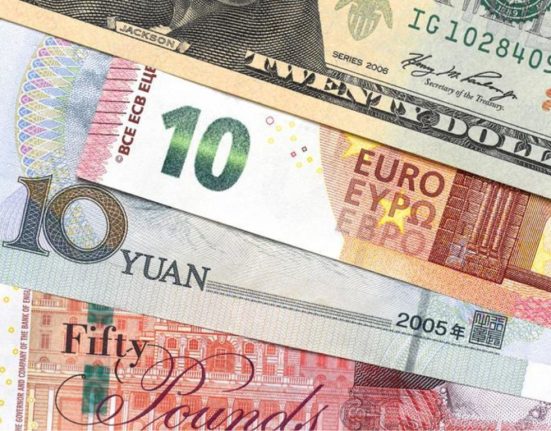The USD/JPY currency pair bounced off support on Friday after data from the United States and Japan missed expectations. The pair is now trading within an ascending channel formation in the 60-minute chart.
The preliminary Michigan Consumer Sentiment Index for May missed the expected reading of 63 with a reading of 57.7. This is the lowest reading since August 2021 and suggests that US consumers are becoming increasingly pessimistic about the economy. Earlier in the week, the consumer price index ex-food and energy matched the (MoM) and (YoY) estimates of 0.4% and 5.5%. This suggests that inflation is still running hot in the US, which could weigh on the economy in the long run. On the other hand, the producer price index ex-food and energy missed the estimated YoY change of 3.3% with a change of 3.2%. This suggests that inflation is starting to moderate in the producer sector, which could provide some relief to consumers.
In Japan, the non-seasonally adjusted current account balance for March missed the expectation of 2,847.3 billion yen with a balance of 2,278.1 billion yen. This is the first time that the current account balance has fallen below 2 trillion yen since January 2022. The weakness in the current account balance is likely due to the ongoing trade war between the United States and China, which is hurting Japanese exports. On the other hand, the Trade balance based on the Balance of Payments stood at -454.4 billion yen, beating the expected reading of -1,397.1 billion yen. This suggests that Japanese exports are still holding up relatively well, despite the trade war. The eco watchers survey beat both the current and outlook estimates of 54.1 and 52.6, respectively with a reading of 55.7 and 54.6. This suggests that Japanese businesses are still optimistic about the economy, despite the trade war.
The weakness in the US data is likely due to concerns about the economy, which is being weighed down by rising inflation and interest rates. The weakness in the Japanese data is likely due to the ongoing trade war between the United States and China, which is hurting Japanese exports.
The bounce in the USD/JPY pair is likely due to short-covering, as traders who had bet on the pair to fall are now buying back their positions. The pair is likely to remain volatile in the near term, as traders will be looking for further cues from the US and Japanese economies.
Here are some of the key factors that are likely to influence the USD/JPY pair in the near term:
- The US Federal Reserve is expected to raise interest rates several times this year in an effort to combat inflation. This could weigh on the US economy and could lead to a decline in the USD/JPY pair.
- The trade war between the United States and China is likely to continue to weigh on the Japanese economy. This could lead to a decline in the Japanese yen and could support the USD/JPY pair.
- The outcome of the Japanese general election, which is scheduled to be held on October 31, 2023, could also influence the USD/JPY pair. If the ruling Liberal Democratic Party wins the election, it is likely to continue with its current economic policies, which could support the Japanese yen and could weigh on the USD/JPY pair. However, if the opposition Democratic Party of Japan wins the election, it is likely to adopt more expansionary economic policies, which could weaken the Japanese yen and could support the USD/JPY pair.
Overall, the USD/JPY pair is likely to remain volatile in the near term. Traders should be prepared for sharp swings in the pair as they react to news from the US and Japanese economies.










